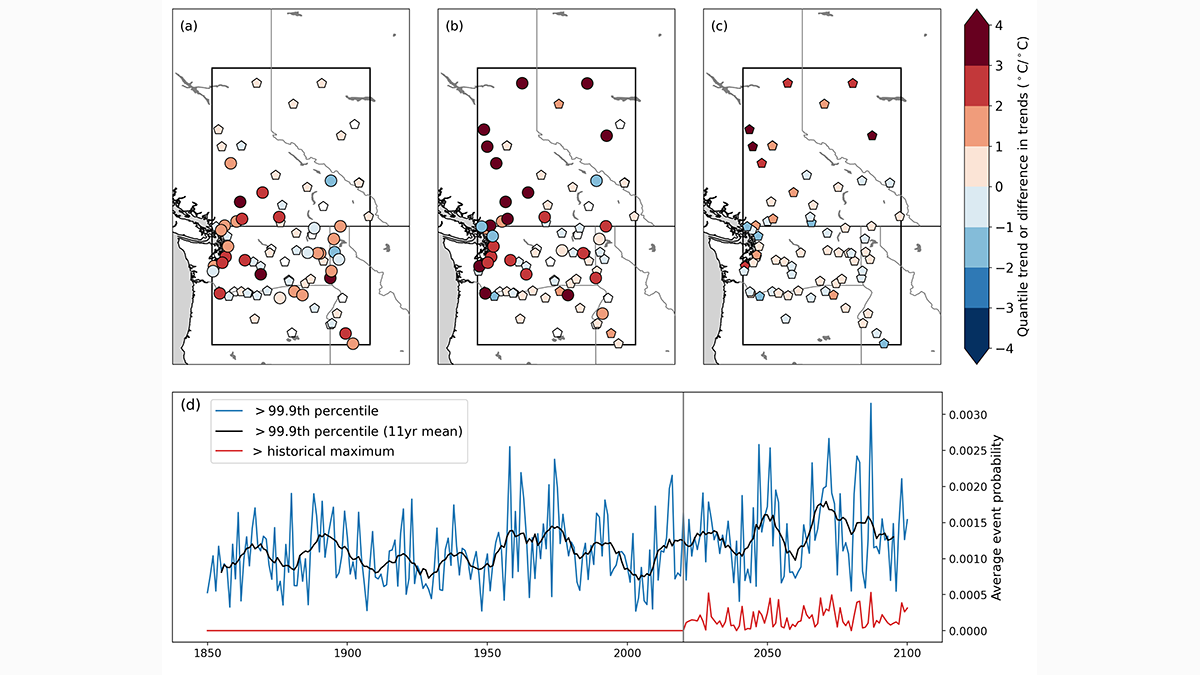Editors’ Highlights are summaries of recent papers by AGU’s journal editors.
Source: Geophysical Research Letters
The 2021 Pacific Northwest heatwave was an exceptional event affecting most of western North America in late June to mid-July 2021. The temperatures reached were very high and led to many deaths in both the United States and Canada.
McKinnon and Simpson [2022] explore how unexpected that event was using both observations from weather stations across the region, as well as output from a large-ensemble (many simulations) of a global climate model (Community Earth System Model version 2) in historical conditions and one future climate scenario (ssp370, a regional rivalry scenario). They showed that in the Pacific Northwest the observed maximum temperatures in the summertime are not increasing faster than the mean. Furthermore, the climate model can simulate similar extreme events in the region, but these are rare.
In future projections, the most extreme temperature events in that region are increasing faster than the mean, which could lead to more frequent extreme events in the future.
Citation: McKinnon, K. A., & Simpson, I. R. (2022). How unexpected was the 2021 Pacific Northwest heatwave? Geophysical Research Letters, 49, e2022GL100380. https://doi.org/10.1029/2022GL100380
—Suzana Camargo, Editor, Geophysical Research Letters

